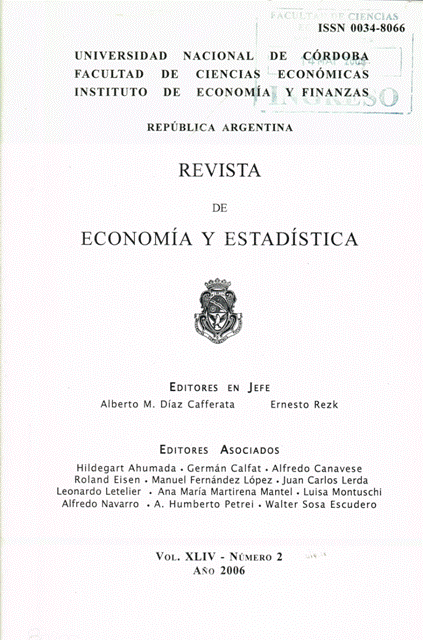A Practitioner’s Guide to Intergovernmental Fiscal Transfers
DOI:
https://doi.org/10.55444/2451.7321.2006.v44.n2.4088Palabras clave:
intergovernmental finance, fiscal transfersResumen
Intergovernmental fiscal transfers are a dominant feature of sub-national finance in most countries. They are used to ensure that revenues roughly match the expenditure needs of various orders (levels) of sub-national governments. They are also used to advance national, regional and local area objectives such as fairness and equity and creating a common economic union. The structure of these transfers create incentives for national, regional and local governments that have a bearing on fiscal management, macroeconomic stability, distributional equity, allocative efficiency and public services delivery. This paper reviews conceptual, empirical and the practice literature to distill lessons of policy interest in designing the fiscal transfers to create the right incentives for prudent fiscal managment and competitive and innovative service delivery. The paper provides practical guidance on the design of performance-oriented transfers that emphasize bottom-up, client- focused and results-based government accountability. It cites examples of simple but innovative grant designs that can satisfy grantors’ objectives while preserving local autonomy and creating an enabling environment for responsive, responsible, equitable and accountable public governance. The paper further provides guidance on the design and the practice of equalization transfers for regional fiscal equity as well as the institutional arrangements for implementation of such transfer mechanisms. The paper concludes with negative (practices to avoid) and positive (practices to emulate) lessons from international practices.Descargas
Descargas
Publicado
Número
Sección
Licencia
Derechos de autor 2006 Anwar Shah

Esta obra está bajo una licencia internacional Creative Commons Atribución-NoComercial-SinDerivadas 4.0.
Aquellos autores/as que tengan publicaciones con esta revista, aceptan los términos siguientes:
Los autores/as conservarán sus derechos de autor y garantizarán a la revista el derecho de primera publicación de su obra, el cuál estará simultáneamente sujeto a la Licencia Creative Commons Atribución-NoComercial-SinDerivar 4.0 Internacional que permite a terceros compartir la obra siempre que se indique su autor y su primera publicación esta revista.
Los autores/as podrán adoptar otros acuerdos de licencia no exclusiva de distribución de la versión de la obra publicada (p. ej.: depositarla en un archivo telemático institucional o publicarla en un volumen monográfico) siempre que se indique la publicación inicial en esta revista.
Se permite y recomienda a los autores/as difundir su obra a través de Internet (p. ej.: en archivos telemáticos institucionales o en su página web) antes y durante el proceso de envío, lo cual puede producir intercambios interesantes y aumentar las citas de la obra publicada. (Véase El efecto del acceso abierto)














